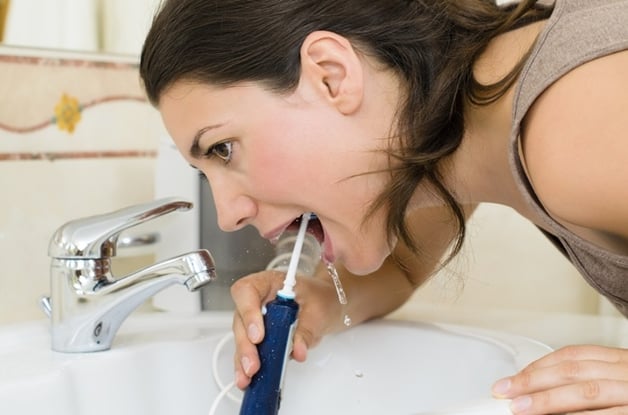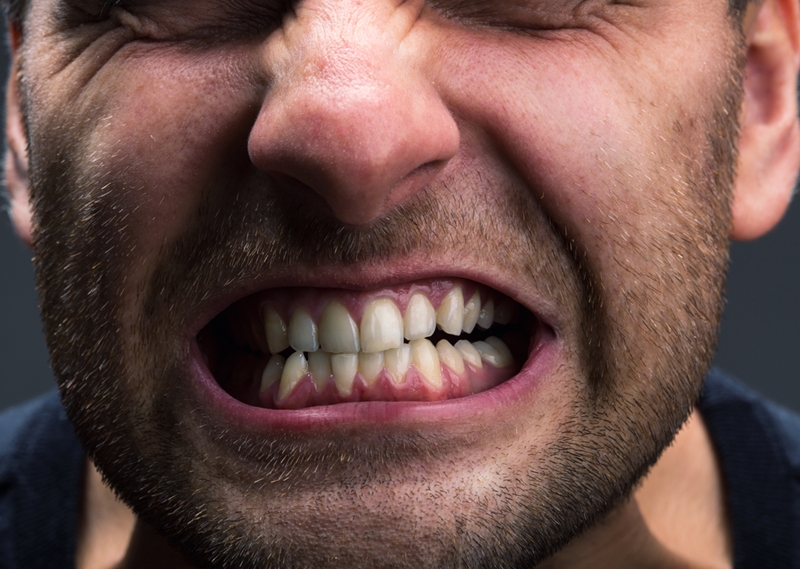
Dentistry is constantly evolving. After all, dental discount cards have made affordable dental care more widely available. What's more, electric toothbrushes increasingly replace manual ones. At-home care has certainly seen major improvements, especially when it comes to the tools individuals use. Oral irrigation is a particularly popular trend, and it may be the right move for your mouth.
An overview of oral irrigation
Oral irrigators come in a few different varieties, including dental water jets and water picks. Regardless of the name, these tools serve the same overall purpose: to remove plaque and debris from between the teeth. Oral irrigators use streams of pulsating water to flush away any harmful food or bacterial remnants along the gum line. Dentists have used these devices in their offices for years, but now, water picks are available to the general public for at-home care, too.

Cleaning in between the teeth is important for maintaining a healthy smile.
Benefits of oral irrigators
Not everyone has made the switch to water flossers as opposed to string, but evidence demonstrates that oral irrigators may be just as effective, if not more so, than the traditional interdental cleaning method. Research published by the the Journal of Clinical Dentistry found that water flossers were better at reducing gingival bleeding than typical floss.1 Bleeding gums often occur due to a buildup of plaque, which ultimately causes gingivitis - the earliest form of gum disease.2 Regularly flossing helps prevent this from happening, but this daily oral hygiene practice can also cause bleeding with already sensitive gums. Oral irrigators effectively mitigate this consequence, as the water stream is typically less abrasive than string. This may also show benefits for reducing inflammation and working with dental implants.
"Oral irrigators may be just as effective as floss."
However, that gentleness doesn't necessarily mean oral irrigators don't clean the teeth as well. In fact, a separate study evaluating dental water jets determined that oral irrigation is just as effective at removing bacteria.3 Specifically, a standard jet tip can eliminate 99.9 percent of plaque biofilm from the tooth's surface. This is crucial for maintaining a healthy smile, as an accumulation of plaque may result in periodontitis, which has been linked to serious systemic diseases, including diabetes and cardiovascular conditions.
Furthermore, water picks may provide a deeper cleaning than floss, as many people find it difficult to effectively reach all areas of the teeth with string, including below the gum line. Water picks have been shown to reach as much as 50 percent of a gum pocket's depth.4 Cleaning in this area is especially important for preventing periodontal disease, as these pockets provide an ideal environment for bacteria to grow.
Why use oral irrigators?
Many people find flossing uncomfortable, as it can be messy and difficult to reach the back of the mouth. Perhaps that's why 27 percent of U.S. adults admit avoiding this healthy habit, according to a national survey sponsored by the American Academy of Periodontology (AAP).5 Additionally, 36 percent of respondents said they would rather do something as unpleasant as cleaning the toilet than floss.
"Over one-third of U.S. adults would rather clean toilets than floss."
Despite the negative mentality associated with flossing, it's still an important aspect of dental health. Dentists generally recommend that you floss your teeth once a day, and many oral-irrigation users find water picks an easier and more efficient alternative to the traditional string method. The tool essentially does all the work, and you don't have to reach so far into your mouth to get those plaque-removing benefits.
How to use oral irrigators
Of course, it's important to follow the manufacturer's directions as far as charging the device and filling it with water. However, these tips may guide you through the process more neatly:
- Make sure the tip clicks fully in place before turning the device on.
- Lean over the sink to avoid dripping water on the floor.
- Use the lowest pressure setting until you get the hang of how the water pick works.
- Aim the water pick tip at a 90-degree angle along the gum line, starting at your back teeth.
- Allow the water to flow from your mouth to the sink with your lips slightly closed.
- Target the back, front and sides of every tooth.
Experts have long debated whether oral irrigation should be considered an effective alternative to flossing. For instance, Alan Carr, D.M.D., explained in a Mayo Clinic article that patients should consider modifications to manual floss, such as switching to wax-coated string, before opting for oral irrigation tools.6 Registered Dental Hygienist, on the other hand, disagrees.4 The magazine urged dentists to encourage patients to utilize these devices daily. Either way, it's crucial to speak with your dental health professional about which option is best for you. Use a dental discount card at your next appointment.
___________________________________________________________________
1. "Comparison of irrigation to floss as an adjunct to tooth brushing: effect on bleeding, gingivitis, and supragingival plaque," Caren M. Barnes, et. al., The Journal of Clinical Dentistry. http://www.dewittetandenwinkel.nl/docs/research/jocd/jocd_wp.pdf
2. "Bleeding gums," National Institutes of Health. https://www.nlm.nih.gov/medlineplus/ency/article/003062.htm
3. "Biofilm removal with a dental water jet," Gorur, et. al., Compendium of Continuing Education in Dentistry, Mar. 30, 2009. http://www.ncbi.nlm.nih.gov/pubmed/19385349
4. "A top 10 list for water flossing," Carol Jahn, RDH, MS., Registered Dental Hygienist Magazine. http://www.rdhmag.com/articles/print/volume-32/issue-2/features/a-top-10-list-for-water-flossing.html
5. "More than a quarter of U.S. adults are dishonest with dentists about how often they floss their teeth," American Academy of Periodontology, June 23, 2015. https://www.perio.org/consumer/quarter-of-adults-dishonest-with-dentists
6. "Is it more effective to floss teeth with a water pick or standard dental floss?" Alan Carr, D.M.D., Mayo Clinic, Feb. 18, 2015. http://www.mayoclinic.org/healthy-lifestyle/adult-health/expert-answers/dental-floss/faq-20058112
